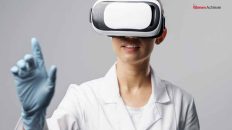How can women from non-tech backgrounds gain knowledge about data science
Women in data science is a topic that is continually drawing young women in tech from all disciplines in the modern era of big data. Data science is an interdisciplinary field by definition, therefore it greatly benefits from the diversity of viewpoints. The number of female data scientists is increasing. But what about women from a non-tech background?
Begin with Excel
Excel is the first concept that all men and women in data science would have started learning initially. The main purpose of Excel, a very well-liked business program, is to gather and store data. As a result, Excel has the majority of the data that women in tech can use. Understanding how to manage and analyze data in Excel is an easier starting point for women from a non-technical background and probably no programming knowledge, and it will serve as a very important foundation for your career as a data scientist.
The next step in Excel for aspiring female data scientists will be to learn how to use pivot tables, which will enable you to aggregate and summarise data.
Study Introductory Python
Female data scientists frequently employ a variety of tools in the Python programming language to carry out more sophisticated descriptive, prescriptive, and predictive data analysis, including machine learning.
You must first comprehend some python language fundamentals, such as general grammar, dealing with variables and expressions, control flow (loops and conditional statements), functions, data types, and data structures to improve your basic knowledge of data science, before using the language for these data analysis functions. With a thorough grasp of these ideas, women from non-technical backgrounds should be able to start using Python to build straightforward logic-based applications and lay the groundwork for learning the language for data research.
Learn the Fundamentals of Python for Data Science
You can begin learning Python for Data Science, where you’ll discover several python libraries you can use to work with data, once you have a firm grasp of the fundamental Python ideas. Pandas, NumPy, Matplotlib, and Seaborn are significant ones. The last two are for visuals, while the first two are for mathematical and statistical calculations.
Exploratory Data Analysis, a feature of Python for Data Science, allows you to utilize these packages to extract, clean, analyze, and visualize data. As a woman from a non-technical background, statistics might not be your strong suit, you might wish to take some introductory statistics training because EDA primarily relies on statistics to give meaning to data for the budding women in tech.
Learn the Basics of Machine Learning
Exploratory Data Analysis is more of a descriptive analysis, so if you are comfortable with it, you can go on to the predictive side of data science by learning machine learning. Women in data science might begin by studying popular supervised machine learning techniques for classification and regression (linear regression) (Logistic Regression). To apply these methods without writing any code from scratch, you’ll need to be familiar with the scikit-learn package for Python.
Need to Learn SQL for sure!
A woman from a non-technical background, you must definitely consider learning SQL to work with relational databases once you’re more accustomed to using Excel and other common data sources. As a data scientist, you will frequently interact with vast amounts of SQL data because it is frequently used by businesses to store structured data. The two SQL databases that are the most widely used are PostgreSQL and MySQL. You can begin with one of them as a novice.
Enter the More Advanced Areas
All of the areas mentioned above were meant to provide you with a basic grasp of the many components of a data science portfolio and some hands-on experience with them. The budding women in tech entering data science have still a lot to learn after this, and you can explore any of these more complicated fields. Use NoSQL to work with unstructured data Deep learning and neural networks, reinforcement learning, natural language processing, and unsupervised learning (clustering, association), among other advanced machine learning ideas.






Add comment